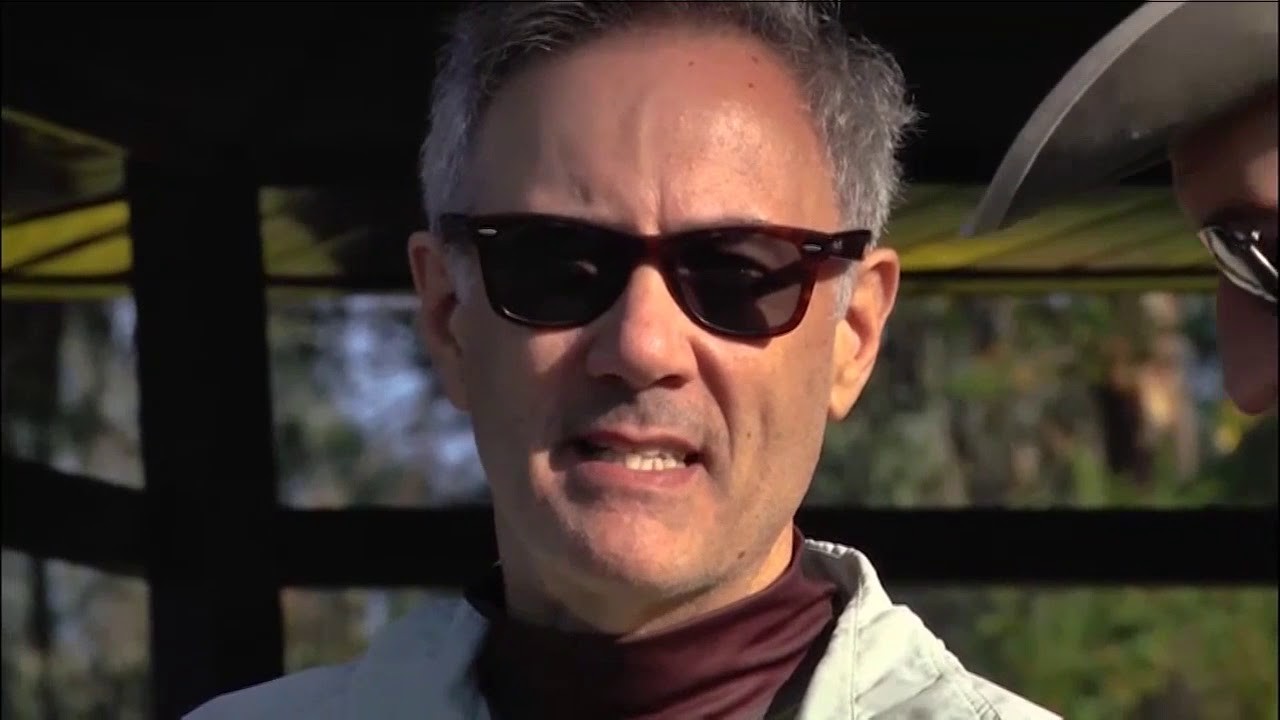Tourism significantly impacts the environment. SIXT.VN is here to guide you on how to explore Vietnam responsibly, ensuring your travels contribute positively to its preservation. Sustainable tourism offers numerous environmental benefits, supporting conservation, reducing pollution, and promoting responsible practices.
1. What Positive Environmental Impacts Can Tourism Have?
Tourism can indeed contribute to environmental preservation by driving conservation efforts, supporting sustainable practices, and fostering environmental awareness. By strategically leveraging tourism, we can achieve significant environmental improvements.
Tourism can be a powerful force for environmental good, leading to several positive impacts:
- Funding for Conservation: Revenue from tourism can directly fund conservation efforts. For example, entrance fees to national parks can support wildlife protection and habitat preservation. The Galapagos Islands, for example, rely heavily on tourism revenue to fund their conservation programs, which protect the unique species found there.
- Environmental Awareness: Tourism can raise awareness about environmental issues among travelers and local communities. Visitors who witness the beauty of natural landscapes firsthand are more likely to support conservation efforts. Educational tours and eco-lodges often provide information on local ecosystems and conservation initiatives, fostering a sense of responsibility among tourists.
- Incentives for Preservation: When natural areas become tourist attractions, there’s a strong economic incentive to preserve them. Local communities and governments are more likely to protect forests, beaches, and wildlife if they generate income through tourism. The Amazon rainforest, for example, benefits from ecotourism, which provides an alternative to deforestation for agriculture or logging.
- Sustainable Practices: Tourism can encourage sustainable practices, such as waste reduction, energy conservation, and responsible water use. Hotels and tour operators that adopt green practices can reduce their environmental impact and attract environmentally conscious travelers. In Costa Rica, many eco-lodges implement sustainable practices, such as using solar power and composting waste, to minimize their environmental footprint.
- Community Empowerment: Tourism can empower local communities by providing jobs and economic opportunities related to conservation. Community-based tourism initiatives can help communities manage and protect natural resources while improving their livelihoods. In Nepal, community-managed forests benefit from tourism revenue, which supports forest conservation and provides income for local villagers.
- Habitat Restoration: Tourist revenue can be used to restore degraded habitats and ecosystems. Reforestation projects, coral reef restoration, and wetland rehabilitation can enhance biodiversity and improve the resilience of natural areas. The Maldives, for instance, invests in coral reef restoration projects to protect its valuable marine ecosystems from the impacts of climate change and tourism.
- Regulation and Enforcement: Increased tourism can lead to stricter environmental regulations and enforcement. Governments may implement policies to protect natural resources and prevent pollution in popular tourist destinations. In Thailand, stricter regulations have been introduced to protect beaches and marine areas from the negative impacts of tourism, such as littering and coral damage.
- Promotion of Green Infrastructure: Tourism can drive investment in green infrastructure, such as bike paths, walking trails, and public transportation, which reduces reliance on cars and promotes sustainable mobility. Cities that invest in green infrastructure can attract eco-conscious tourists and improve the quality of life for residents. Amsterdam, for example, is known for its extensive network of bike paths, which makes it a popular destination for cyclists and reduces traffic congestion and air pollution.
- Support for Local Products: Tourism can encourage the consumption of local products, which reduces the environmental impact of transportation and supports local economies. Farmers markets, craft fairs, and local restaurants can showcase local products and provide tourists with an authentic cultural experience. In Italy, agritourism promotes the consumption of local food and wine, supporting rural economies and preserving traditional farming practices.
- Cultural Preservation: Tourism can incentivize the preservation of cultural heritage, such as historical sites, traditional arts, and local customs. Cultural tourism can provide income for local communities and help to maintain their cultural identity. In Kyoto, Japan, tourism supports the preservation of traditional temples, gardens, and geisha culture, ensuring that these cultural treasures are passed on to future generations.
 Funding conservation through tourism, Galapagos Islands
Funding conservation through tourism, Galapagos Islands
2. What Are Some of The Negative Environmental Effects of Tourism?
Tourism, while beneficial, can lead to habitat destruction, increased pollution, and strain on local resources. Addressing these issues is crucial for sustainable tourism.
Despite its potential benefits, tourism can also have significant negative environmental effects:
- Habitat Destruction: The construction of hotels, resorts, and other tourism-related infrastructure can lead to deforestation, wetland drainage, and other forms of habitat destruction. Coastal areas, in particular, are vulnerable to development that damages fragile ecosystems such as mangroves and coral reefs. In Cancun, Mexico, rapid tourism development has led to the destruction of large areas of mangrove forests, which provide important habitat for wildlife and protect the coastline from erosion.
- Pollution: Tourism can contribute to air, water, and noise pollution. Air pollution from transportation, such as cars, buses, and airplanes, can degrade air quality and contribute to climate change. Water pollution from sewage, fertilizers, and chemicals can contaminate water sources and harm aquatic life. Noise pollution from vehicles, construction, and human activity can disturb wildlife and disrupt natural behaviors. Venice, Italy, struggles with water pollution from cruise ships and other boats, which discharge waste into the canals.
- Waste Generation: Tourism can generate large amounts of waste, including plastic bottles, food wrappers, and other disposable items. Inadequate waste management systems can lead to littering, landfill overflow, and environmental contamination. Mount Everest, Nepal, is known as the world’s highest garbage dump due to the accumulation of waste left behind by climbers.
- Resource Depletion: Tourism can put a strain on local resources, such as water, energy, and food. Hotels and resorts often consume large amounts of water for landscaping, swimming pools, and guest amenities. Increased energy consumption can lead to higher greenhouse gas emissions. The demand for food can drive up prices and deplete local food supplies. Barcelona, Spain, faces water scarcity during peak tourist season due to high water consumption by hotels and tourists.
- Disturbance of Wildlife: Tourists can disturb wildlife by approaching animals too closely, feeding them, or disrupting their habitats. This can alter natural behaviors, reduce breeding success, and increase the risk of human-wildlife conflict. In Yellowstone National Park, USA, visitors who feed wildlife, such as bears and bison, can habituate them to humans and increase the risk of dangerous encounters.
- Introduction of Invasive Species: Tourists can unintentionally introduce invasive species to new areas through their luggage, clothing, or vehicles. Invasive species can outcompete native species, alter ecosystems, and cause economic damage. The brown tree snake, introduced to Guam after World War II, has devastated the island’s native bird populations and caused widespread power outages by climbing on electrical equipment.
- Damage to Cultural Sites: Tourism can damage cultural sites through wear and tear, vandalism, and theft. Overcrowding, pollution, and lack of regulation can degrade historical buildings, archaeological sites, and other cultural treasures. Machu Picchu, Peru, faces challenges from overcrowding, which can damage the site’s fragile stone structures and disrupt the surrounding ecosystem.
- Loss of Local Culture: Tourism can lead to the commercialization and commodification of local culture, as traditional arts, crafts, and ceremonies are adapted to cater to tourist tastes. This can erode cultural identity and reduce the authenticity of cultural experiences. Bali, Indonesia, has experienced the loss of traditional farming practices and cultural ceremonies due to the rapid growth of tourism.
- Overcrowding: Popular tourist destinations can become overcrowded, leading to congestion, long lines, and a diminished quality of experience for both tourists and local residents. Overcrowding can also put a strain on infrastructure and services, such as transportation, sanitation, and healthcare. Venice, Italy, struggles with overcrowding during peak tourist season, which can make it difficult for residents to navigate the city and access essential services.
- Climate Change: Transportation, accommodation, and other aspects of tourism contribute to greenhouse gas emissions, which contribute to climate change. Rising sea levels, extreme weather events, and changes in temperature and precipitation can damage tourist destinations and disrupt tourism activities. The Maldives, a low-lying island nation, is highly vulnerable to sea-level rise and faces the threat of being submerged by climate change.
 Waste generation, Mount Everest
Waste generation, Mount Everest
3. How Does Tourism Contribute To Climate Change?
Tourism significantly contributes to climate change through air travel, energy consumption in accommodations, and transportation within destinations. Addressing these emissions is crucial.
Tourism is a significant contributor to climate change, primarily through the following mechanisms:
- Air Travel: Air travel is a major source of greenhouse gas emissions. Airplanes release carbon dioxide, nitrogen oxides, and other pollutants into the atmosphere, which contribute to global warming. The aviation industry accounts for a significant percentage of global greenhouse gas emissions, and its contribution is projected to increase as air travel becomes more accessible and affordable. According to the International Council on Clean Transportation, aviation accounts for around 3.5% of global greenhouse gas emissions.
- Accommodation: Hotels, resorts, and other tourist accommodations consume large amounts of energy for heating, cooling, lighting, and other amenities. This energy consumption often relies on fossil fuels, which release carbon dioxide and other greenhouse gases into the atmosphere. The hospitality industry accounts for a significant percentage of global energy consumption and greenhouse gas emissions. A study by Cornell University found that hotels account for about 1% of global greenhouse gas emissions.
- Transportation: Tourists use various modes of transportation to travel within destinations, including cars, buses, trains, and boats. These transportation modes often rely on fossil fuels, which release carbon dioxide and other greenhouse gases into the atmosphere. The transportation sector is a major contributor to global greenhouse gas emissions, and tourism-related transportation adds to this burden. The United Nations Environment Programme estimates that transportation accounts for about 22% of global carbon dioxide emissions.
- Cruise Ships: Cruise ships are floating cities that consume large amounts of energy and generate significant amounts of waste. Cruise ships release carbon dioxide, nitrogen oxides, sulfur oxides, and other pollutants into the air and water, which contribute to climate change and harm marine ecosystems. The cruise industry accounts for a small but growing percentage of global greenhouse gas emissions. A study by the European Federation for Transport and Environment found that cruise ships emit more sulfur oxides than all the cars in Europe.
- Food Production: Tourist destinations often need to import food to cater to the diverse and increased demands of visitors. The transportation of food over long distances releases carbon dioxide and other greenhouse gases into the atmosphere. Additionally, the production of certain foods, such as meat and dairy products, is associated with high greenhouse gas emissions. The food industry accounts for a significant percentage of global greenhouse gas emissions, and tourism-related food consumption adds to this burden. The Food and Agriculture Organization of the United Nations estimates that the food industry accounts for about 26% of global greenhouse gas emissions.
- Waste Management: Tourism generates large amounts of waste, which often ends up in landfills. Landfills release methane, a potent greenhouse gas, into the atmosphere. Additionally, the transportation and processing of waste require energy, which often relies on fossil fuels. The waste management sector accounts for a small but growing percentage of global greenhouse gas emissions. The Intergovernmental Panel on Climate Change estimates that the waste management sector accounts for about 3% of global greenhouse gas emissions.
- Infrastructure Development: The construction of tourism-related infrastructure, such as airports, roads, and hotels, can lead to deforestation and habitat destruction. Forests and other natural habitats play a crucial role in absorbing carbon dioxide from the atmosphere. Deforestation and habitat destruction reduce the planet’s capacity to absorb carbon dioxide, which contributes to climate change. The United Nations Environment Programme estimates that deforestation accounts for about 10% of global greenhouse gas emissions.
- Water Consumption: Hotels, resorts, and other tourist accommodations often consume large amounts of water for landscaping, swimming pools, and guest amenities. Water scarcity can exacerbate climate change by reducing the availability of water for agriculture, industry, and human consumption. Additionally, the energy required to pump, treat, and distribute water can release carbon dioxide and other greenhouse gases into the atmosphere. The World Resources Institute estimates that water scarcity affects about 40% of the world’s population.
- Tourism Activities: Certain tourism activities, such as skiing, golfing, and scuba diving, can have a negative impact on the environment and contribute to climate change. Ski resorts require large amounts of energy for snowmaking and lift operations. Golf courses require large amounts of water and fertilizers, which can pollute water sources. Scuba diving can damage coral reefs and disrupt marine ecosystems. These activities contribute to greenhouse gas emissions and environmental degradation, which exacerbate climate change.
 Air travel emissions
Air travel emissions
4. What Is Eco-Tourism and How Does It Help The Environment?
Eco-tourism promotes responsible travel to natural areas, conserving the environment and improving the well-being of local communities. It’s a sustainable approach to tourism.
Eco-tourism is a form of tourism that is focused on responsible travel to natural areas, with the goal of conserving the environment and improving the well-being of local communities. Eco-tourism is based on the following principles:
- Minimize Environmental Impact: Eco-tourism seeks to minimize the negative impact of tourism on the environment by promoting sustainable practices, such as reducing waste, conserving energy, and protecting natural resources. Eco-lodges often use renewable energy sources, such as solar power and wind power, and implement water conservation measures, such as rainwater harvesting and greywater recycling.
- Respect Local Culture: Eco-tourism respects local cultures and traditions by involving local communities in the planning and management of tourism activities. Eco-tourism initiatives often provide economic opportunities for local communities, such as employment as tour guides, artisans, and hospitality workers. Eco-tourism also promotes cultural exchange and understanding between tourists and local communities.
- Educate Travelers: Eco-tourism educates travelers about the environment and local cultures. Eco-tours often include educational components, such as guided nature walks, cultural demonstrations, and presentations on local ecosystems and conservation issues. Eco-tourism also encourages travelers to be responsible and respectful of the environment and local cultures.
- Benefit Local Communities: Eco-tourism benefits local communities by providing economic opportunities, promoting cultural preservation, and supporting conservation efforts. Eco-tourism initiatives often reinvest a portion of their profits in local community development projects, such as schools, clinics, and infrastructure improvements. Eco-tourism also empowers local communities to manage and protect their natural resources.
- Promote Conservation: Eco-tourism promotes conservation by generating revenue for conservation projects, raising awareness about conservation issues, and encouraging sustainable practices. Eco-tourism initiatives often support conservation organizations and research projects that study local ecosystems and develop strategies for protecting them. Eco-tourism also encourages travelers to support conservation efforts by donating to conservation organizations and participating in conservation activities.
- Sustainable Development: Eco-tourism promotes sustainable development by balancing economic, social, and environmental considerations. Eco-tourism initiatives strive to create a tourism industry that is environmentally sustainable, socially responsible, and economically viable. Eco-tourism also encourages long-term planning and management of tourism activities to ensure that they do not harm the environment or local communities.
- Ethical Travel: Eco-tourism promotes ethical travel by encouraging travelers to be mindful of their impact on the environment and local cultures. Eco-tourism initiatives often provide travelers with guidelines for responsible travel, such as avoiding single-use plastics, respecting local customs, and supporting local businesses. Eco-tourism also encourages travelers to be informed about the issues facing the destinations they visit and to advocate for sustainable solutions.
Eco-tourism helps the environment by:
- Conserving Biodiversity: Eco-tourism helps to conserve biodiversity by protecting natural habitats and wildlife. Eco-tourism initiatives often support the establishment and management of protected areas, such as national parks, wildlife reserves, and marine sanctuaries. Eco-tourism also encourages sustainable land use practices that minimize the impact on biodiversity.
- Reducing Pollution: Eco-tourism helps to reduce pollution by promoting sustainable transportation, waste management, and energy consumption practices. Eco-lodges often use renewable energy sources, such as solar power and wind power, and implement water conservation measures, such as rainwater harvesting and greywater recycling. Eco-tourism also encourages travelers to use public transportation, walk, or bike instead of driving cars.
- Protecting Natural Resources: Eco-tourism helps to protect natural resources by promoting sustainable use of water, forests, and other resources. Eco-tourism initiatives often support sustainable agriculture, forestry, and fishing practices that minimize the impact on natural resources. Eco-tourism also encourages travelers to conserve water and energy and to avoid wasting resources.
- Empowering Local Communities: Eco-tourism helps to empower local communities by providing economic opportunities, promoting cultural preservation, and supporting conservation efforts. Eco-tourism initiatives often involve local communities in the planning and management of tourism activities and reinvest a portion of their profits in local community development projects. Eco-tourism also encourages travelers to support local businesses and to learn about local cultures.
- Raising Awareness: Eco-tourism helps to raise awareness about environmental issues and the importance of conservation. Eco-tours often include educational components that teach travelers about local ecosystems, conservation issues, and sustainable practices. Eco-tourism also encourages travelers to be responsible and respectful of the environment and local cultures.
 Eco-tourism, Costa Rica
Eco-tourism, Costa Rica
5. How Can Travelers Reduce Their Carbon Footprint While on Vacation?
Travelers can reduce their carbon footprint by choosing eco-friendly accommodations, using public transportation, and supporting local businesses. Every small step counts.
Travelers can reduce their carbon footprint while on vacation by taking the following steps:
- Choose Eco-Friendly Accommodations: Choose hotels, resorts, and other accommodations that have implemented sustainable practices, such as using renewable energy sources, conserving water, and reducing waste. Look for accommodations that have been certified by a reputable green certification program, such as LEED or Green Globe.
- Fly Less: Air travel is a major source of greenhouse gas emissions, so try to fly less by choosing destinations that are closer to home or by taking alternative modes of transportation, such as trains or buses. If you must fly, consider flying direct to reduce the number of takeoffs and landings, which are the most energy-intensive parts of a flight.
- Pack Light: Pack light to reduce the weight of your luggage, which can decrease fuel consumption during transportation. Avoid packing items that you can easily purchase at your destination, such as toiletries and sunscreen.
- Use Public Transportation: Use public transportation, such as buses, trains, and subways, instead of renting a car or taking taxis. Public transportation is more energy-efficient than private vehicles and can help to reduce traffic congestion and air pollution.
- Walk or Bike: Walk or bike instead of driving or taking public transportation whenever possible. Walking and biking are zero-emission modes of transportation that can help you to stay active and explore your destination at a slower pace.
- Eat Local Food: Eat local food at restaurants and markets that source their ingredients from local farms and producers. Eating local food reduces the carbon footprint of transportation and supports local economies.
- Reduce Waste: Reduce waste by bringing your own reusable water bottle, coffee cup, shopping bag, and utensils. Avoid single-use plastics, such as plastic straws, cups, and bags.
- Conserve Water: Conserve water by taking shorter showers, turning off the tap while brushing your teeth, and avoiding washing your clothes and towels unnecessarily.
- Conserve Energy: Conserve energy by turning off lights, air conditioning, and electronics when you leave your hotel room. Unplug chargers and other electronic devices when they are not in use.
- Respect Local Culture: Respect local culture by learning about local customs and traditions, dressing appropriately, and avoiding behaviors that may be offensive or disrespectful.
- Support Local Businesses: Support local businesses by shopping at local stores, hiring local guides, and participating in local tours and activities.
- Offset Your Carbon Footprint: Offset your carbon footprint by donating to a reputable carbon offset program that invests in projects that reduce greenhouse gas emissions, such as renewable energy projects, reforestation projects, and energy efficiency projects.
 Reduce your carbon footprint by supporting local businesses
Reduce your carbon footprint by supporting local businesses
6. How Can Governments and Tourism Operators Promote Sustainable Tourism?
Governments can implement regulations and incentives, while tourism operators can adopt sustainable practices and educate travelers. Collaboration is key.
Governments and tourism operators can promote sustainable tourism by taking the following actions:
Government Actions:
- Implement Regulations: Implement regulations that require tourism operators to adopt sustainable practices, such as reducing waste, conserving energy, and protecting natural resources.
- Provide Incentives: Provide incentives for tourism operators to adopt sustainable practices, such as tax breaks, grants, and subsidies.
- Invest in Infrastructure: Invest in infrastructure that supports sustainable tourism, such as public transportation, bike paths, and renewable energy projects.
- Promote Education: Promote education about sustainable tourism to travelers, tourism operators, and local communities.
- Establish Protected Areas: Establish protected areas, such as national parks, wildlife reserves, and marine sanctuaries, to protect natural habitats and biodiversity.
- Enforce Environmental Laws: Enforce environmental laws and regulations to prevent pollution and protect natural resources.
- Support Community-Based Tourism: Support community-based tourism initiatives that involve local communities in the planning and management of tourism activities.
- Promote Eco-Certification Programs: Promote eco-certification programs that recognize tourism operators that have implemented sustainable practices.
- Develop Sustainable Tourism Strategies: Develop sustainable tourism strategies that balance economic, social, and environmental considerations.
- Collaborate with Stakeholders: Collaborate with stakeholders, such as tourism operators, local communities, and conservation organizations, to promote sustainable tourism.
Tourism Operator Actions:
- Implement Sustainable Practices: Implement sustainable practices, such as reducing waste, conserving energy, and protecting natural resources.
- Use Renewable Energy: Use renewable energy sources, such as solar power and wind power.
- Conserve Water: Conserve water by implementing water-saving measures, such as low-flow showerheads and toilets.
- Reduce Waste: Reduce waste by recycling, composting, and avoiding single-use plastics.
- Protect Natural Habitats: Protect natural habitats by avoiding development in sensitive areas and by implementing measures to minimize the impact on wildlife.
- Respect Local Culture: Respect local culture by learning about local customs and traditions and by avoiding behaviors that may be offensive or disrespectful.
- Support Local Businesses: Support local businesses by purchasing local products and services.
- Educate Travelers: Educate travelers about sustainable tourism and encourage them to adopt responsible travel practices.
- Offer Eco-Tours: Offer eco-tours that focus on nature, culture, and conservation.
- Obtain Eco-Certification: Obtain eco-certification from a reputable certification program to demonstrate your commitment to sustainability.
- Collaborate with Local Communities: Collaborate with local communities to develop tourism products and services that benefit local residents.
 Sustainable tourism strategies
Sustainable tourism strategies
7. What Are The Benefits of Community-Based Tourism?
Community-based tourism empowers local communities, preserves cultural heritage, and promotes sustainable development. It offers authentic experiences for travelers.
Community-based tourism (CBT) is a form of tourism that is owned and managed by local communities. CBT is based on the following principles:
- Community Ownership: CBT is owned and managed by local communities, who have control over the tourism resources and activities.
- Community Participation: CBT involves the active participation of local communities in the planning, management, and operation of tourism activities.
- Community Benefits: CBT provides economic, social, and environmental benefits to local communities.
- Cultural Preservation: CBT promotes the preservation of local cultures and traditions.
- Environmental Sustainability: CBT is environmentally sustainable and minimizes the negative impact on natural resources.
The benefits of community-based tourism include:
- Economic Benefits: CBT provides economic benefits to local communities by generating income, creating jobs, and diversifying livelihoods. CBT can help to reduce poverty and improve the standard of living in rural areas.
- Social Benefits: CBT provides social benefits to local communities by promoting community empowerment, social cohesion, and cultural exchange. CBT can help to strengthen local cultures and traditions and to build pride in local heritage.
- Environmental Benefits: CBT provides environmental benefits by promoting conservation, protecting natural resources, and reducing pollution. CBT can help to preserve biodiversity, protect watersheds, and mitigate climate change.
- Cultural Preservation: CBT promotes the preservation of local cultures and traditions by supporting local arts, crafts, and festivals. CBT can help to keep local cultures alive and to pass them on to future generations.
- Empowerment of Women: CBT can empower women by providing them with economic opportunities, increasing their participation in decision-making, and promoting gender equality.
- Improved Education: CBT can improve education by providing funding for schools, libraries, and other educational facilities.
- Improved Healthcare: CBT can improve healthcare by providing funding for clinics, hospitals, and other healthcare facilities.
- Improved Infrastructure: CBT can improve infrastructure by providing funding for roads, bridges, and other infrastructure projects.
- Reduced Crime: CBT can reduce crime by creating jobs, providing opportunities for education and training, and promoting social cohesion.
- Improved Governance: CBT can improve governance by promoting transparency, accountability, and participation in decision-making.
 Cultural preservation in community-based tourism
Cultural preservation in community-based tourism
8. How Does Tourism Impact Wildlife and Habitats?
Tourism can disrupt wildlife behavior, destroy habitats, and introduce invasive species. Responsible practices are essential to minimize these impacts.
Tourism can have a significant impact on wildlife and habitats, both positive and negative.
Negative Impacts:
- Habitat Destruction: The construction of hotels, resorts, and other tourism-related infrastructure can lead to deforestation, wetland drainage, and other forms of habitat destruction.
- Disturbance of Wildlife: Tourists can disturb wildlife by approaching animals too closely, feeding them, or disrupting their habitats.
- Introduction of Invasive Species: Tourists can unintentionally introduce invasive species to new areas through their luggage, clothing, or vehicles.
- Pollution: Tourism can contribute to air, water, and noise pollution, which can harm wildlife and degrade habitats.
- Overcrowding: Overcrowding can put a strain on natural resources and disrupt wildlife behavior.
- Illegal Wildlife Trade: Tourism can fuel the illegal wildlife trade by creating demand for souvenirs made from endangered species.
Positive Impacts:
- Funding for Conservation: Tourism can generate revenue for conservation projects, such as national parks, wildlife reserves, and anti-poaching patrols.
- Increased Awareness: Tourism can increase awareness about the importance of wildlife conservation.
- Economic Incentives for Conservation: Tourism can provide economic incentives for local communities to protect wildlife and habitats.
- Habitat Restoration: Tourism revenue can be used to restore degraded habitats and ecosystems.
- Wildlife Rehabilitation: Tourism can support wildlife rehabilitation centers that rescue and care for injured or orphaned animals.
Examples of Tourism’s Impact on Wildlife and Habitats:
- Great Barrier Reef, Australia: Tourism is a major industry on the Great Barrier Reef, but it also contributes to coral bleaching, pollution, and habitat destruction.
- Amazon Rainforest, Brazil: Tourism is growing in the Amazon rainforest, but it also contributes to deforestation, wildlife disturbance, and cultural disruption.
- Mount Everest, Nepal: Tourism on Mount Everest has led to overcrowding, pollution, and the accumulation of waste.
- Galapagos Islands, Ecuador: Tourism is a major industry in the Galapagos Islands, but it also contributes to the introduction of invasive species and the disturbance of wildlife.
- African Safari, East Africa: Tourism to the African savanna can help fund conservation, but unregulated tourism practices can disrupt wildlife and damage habitats.
Responsible Tourism Practices:
- Choose Eco-Friendly Accommodations: Choose hotels and resorts that have implemented sustainable practices and that minimize their impact on the environment.
- Respect Wildlife: Observe wildlife from a distance, avoid feeding animals, and follow the instructions of your tour guide.
- Avoid Single-Use Plastics: Bring your own reusable water bottle, coffee cup, shopping bag, and utensils to reduce waste.
- Support Local Businesses: Support local businesses by purchasing local products and services.
- Learn About Local Culture: Learn about local customs and traditions to avoid behaviors that may be offensive or disrespectful.
- Donate to Conservation Organizations: Donate to conservation organizations that are working to protect wildlife and habitats.
- Spread the Word: Share your experiences with others and encourage them to travel responsibly.
9. How Can Technology Help Make Tourism More Environmentally Friendly?
Technology can optimize travel routes, promote sustainable accommodations, and provide real-time information on environmental conditions, enhancing eco-friendly tourism.
Technology can play a significant role in making tourism more environmentally friendly. Here are some ways that technology can help:
- Smart Transportation: Smart transportation systems can optimize travel routes, reduce traffic congestion, and promote the use of public transportation, cycling, and walking.
- Eco-Friendly Accommodation: Online platforms can provide information about eco-friendly accommodations, such as hotels, resorts, and guesthouses, that have implemented sustainable practices.
- Real-Time Environmental Monitoring: Sensors and monitoring systems can provide real-time information about environmental conditions, such as air quality, water quality, and noise levels, allowing tourists and tourism operators to make informed decisions.
- Personalized Recommendations: Artificial intelligence (AI) and machine learning can be used to provide personalized recommendations to tourists about sustainable travel options, such as eco-tours, local restaurants, and cultural events.
- Virtual Reality (VR) and Augmented Reality (AR): VR and AR can be used to create immersive experiences that allow tourists to explore natural and cultural attractions without physically traveling to those locations.
- Mobile Apps: Mobile apps can provide tourists with information about sustainable tourism practices, such as reducing waste, conserving energy, and respecting local culture.
- Blockchain Technology: Blockchain technology can be used to track and verify the sustainability claims of tourism operators, ensuring that tourists are making informed decisions.
- Gamification: Gamification can be used to encourage tourists to adopt sustainable behaviors, such as reducing waste, conserving water, and using public transportation.
Examples of Technology Used in Sustainable Tourism:
- Smart Cities: Smart cities use technology to optimize transportation, energy consumption, and waste management, making them more sustainable destinations for tourists.
- Online Booking Platforms: Online booking platforms provide information about eco-friendly accommodations and eco-tours, making it easier for tourists to make sustainable choices.
- Mobile Apps: Mobile apps provide tourists with information about sustainable tourism practices and help them to find eco-friendly businesses and attractions.
- Electric Vehicles (EVs): EVs are becoming increasingly popular in tourist destinations, reducing air pollution and greenhouse gas emissions.
- Renewable Energy: Renewable energy sources, such as solar power and wind power, are being used to power hotels, resorts, and other tourist facilities.
- Smart Grids: Smart grids are being used to optimize energy consumption in tourist destinations, reducing waste and greenhouse gas emissions.
 Sustainable tourism strategies
Sustainable tourism strategies
10. What Is The Role of Education in Promoting Environmental Awareness Among Tourists?
Education empowers tourists to make informed decisions, respect local environments, and support sustainable practices, leading to more responsible tourism.
Education plays a critical role in promoting environmental awareness among tourists. Here are some ways that education can help:
- Knowledge and Understanding: Education can provide tourists with knowledge and understanding about environmental issues, such as climate change, biodiversity loss, and pollution.
- Attitude and Values: Education can help to shape tourists’ attitudes and values towards the environment, encouraging them to be more responsible and respectful.
- Skills and Behaviors: Education can provide tourists with the skills and behaviors they need to reduce their environmental impact, such as conserving energy, reducing waste, and respecting local culture.
- Informed Decision-Making: Education can empower tourists to make informed decisions about their travel choices, such as choosing eco-friendly accommodations, supporting local businesses, and participating in sustainable activities.
- Advocacy and Action: Education can inspire tourists to become advocates for environmental protection and to take action to reduce their environmental impact.
Methods of Educating Tourists:
- Pre-Trip Information: Provide tourists with information about environmental issues and sustainable travel practices before they travel to a destination.
- On-Site Interpretation: Provide tourists with on-site interpretation at natural and cultural attractions, explaining the importance of conservation and sustainable practices.
- Guided Tours: Offer guided tours that focus on nature, culture, and conservation, providing tourists with hands-on learning experiences.
- Educational Materials: Provide tourists with educational materials, such as brochures, maps, and guidebooks, that highlight sustainable tourism practices.
- Interactive Exhibits: Create interactive exhibits at museums, visitor centers, and other attractions that educate tourists about environmental issues and sustainable practices.
- Community Engagement: Involve local communities in educating tourists about their culture and traditions, promoting cultural exchange and understanding.
- Social Media: Use social media to share information about sustainable tourism practices and to engage tourists in discussions about environmental issues.
- Certification Programs: Promote certification programs that recognize tourism operators that have implemented sustainable practices, providing tourists with a way to identify and support responsible businesses.
- Partnerships: Form partnerships with schools, universities, and other educational institutions to develop and deliver educational programs about sustainable tourism.
 Educational materials and community engagement
Educational materials and community engagement
Plan Your Eco-Friendly Trip to Vietnam with SIXT.VN
Ready to explore Vietnam responsibly? SIXT.VN offers tailored travel services that prioritize sustainability and local experiences. From eco-friendly accommodations to guided tours that respect local culture and nature, we ensure your journey contributes positively to Vietnam’s environment and communities.
- Personalized Eco-Friendly Tours: Discover Vietnam’s hidden gems with tours designed to minimize environmental impact and maximize cultural immersion.
- Sustainable Accommodation Options: Choose from a curated selection of hotels and resorts committed to green practices.
- Convenient and Eco-Conscious Transportation: Opt for our hybrid and electric vehicle rentals to reduce your carbon footprint as you explore.
Ready to make a difference with your travels?
Visit SIXT.VN today to explore our sustainable travel options and start planning your eco-friendly adventure in Vietnam. Let’s travel responsibly and protect the beauty of Vietnam for future generations.
- Address: 260 Cau Giay, Hanoi, Vietnam
- Hotline/Whatsapp: +84 986 244 358
- Website: SIXT.VN
FAQs About The Environmental Benefits Of Tourism
- What is sustainable tourism?
- Sustainable tourism is travel that minimizes environmental impact, respects local culture, and benefits local communities.
- How does eco-tourism differ from regular tourism?
- Eco-tourism specifically focuses on responsible travel to natural areas, with the goal of conserving the environment and improving local community well-being.
- What are the main environmental impacts of tourism?
- The main impacts include habitat destruction, pollution, waste generation, resource depletion, and contribution to climate change.
- How can I reduce my carbon footprint while traveling?
- Choose eco-friendly accommodations, use public transportation, eat local food, reduce waste, and offset your carbon emissions.
- What is community-based tourism?
- Community-



